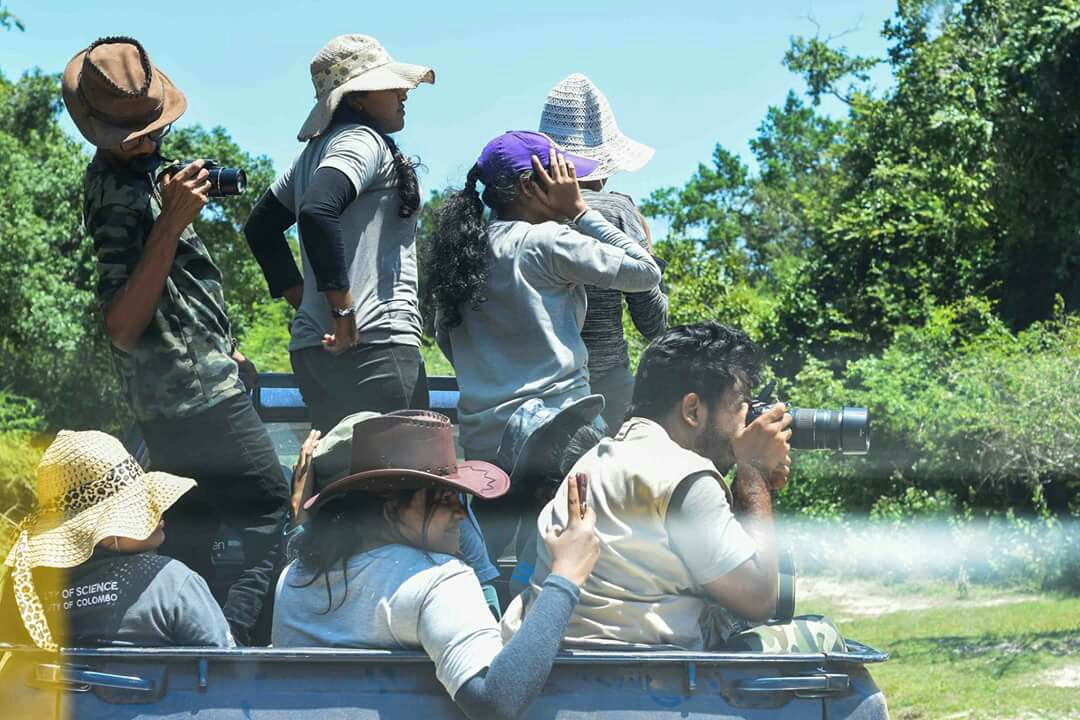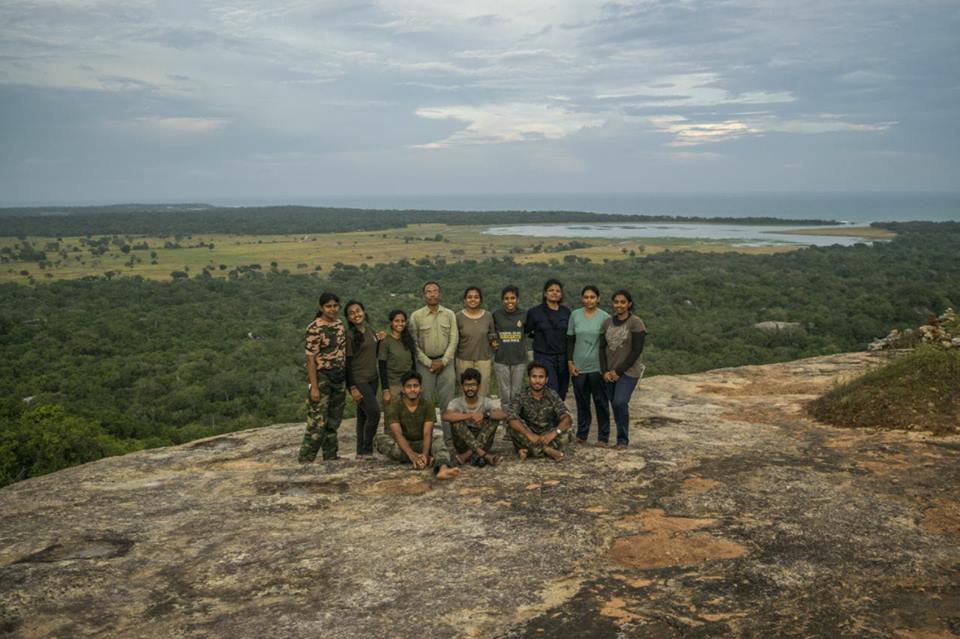‘Explore the wilderness with all your senses! See the beautiful nature around you, breathe in the fresh air of the forest, feel the trails under your feet and listen to the silence.’
I was my very first camping experience as a third year undergrad and to be specific, it was my very first field visit as a Zoology special student. This field class was a part of our ZL3074 – Animal Kingdom 2 course unit under the guidance of Prof. Nihal Dayawansa. We embarked on an adrenaline fueled adventure to Kumana Bird Sanctuary.
Kumana National park, located at the south eastern corner, is one such wonders of Sri Lanka. It is a home to a remarkable collection of animals and prominently known as a bird sanctuary. It owns a wonderful collection of diversity of coastal wetland habitats including lagoons, estuaries, mangroves, salt marshes, villus, interspersed with scrub-lands and forest vegetation. These vegetation types facilitate its astonishingly rich biodiversity. May it be mammals, insects, birds, reptiles or amphibians Kumana claims for a wide variety of it.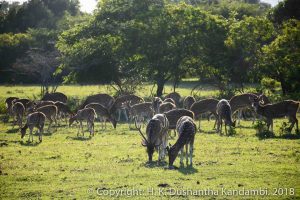
The surroundings were considered ideal for bird watching and the overlooking pristine valleys were a home to varieties of flora and fauna. In my humble opinion, for bird watching enthusiasts, the park is an ‘absolute must’.
Our day started with a free bird watching session in the path to Kirigalbe followed by a discussion about the park.
Mr. Sisira Rathnayaka, the park warden who is also a product of our university, briefed us about the park. He gave us an introduction on the history of the park, about its flora and fauna and its current status. We gathered a lot from his talk. We are thankful to him for helping us throughout the journey in numerous ways and providing us with all the necessary information.
This national park consists of many caves mostly with drip ledges and Brahmi inscriptions indicating that this has been a vast cloister in the ancient times. The remains of brick walls in caves are still shrine rooms and living quarters for meditating monks.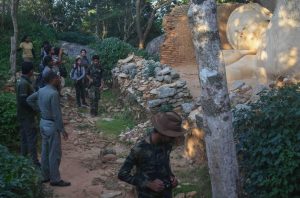
Once a part of an ancient flourishing civilization although today Kumana is a dense jungle teeming with wild life. The evidence of this civilization still remains in forms of ruins of massive monastic complexes scattered all over the jungles in Kumana.
Our hiking sessions to Bambaragasthalawa, Panama – Kudumbigala and Balumgala covered all the sites that are of historical importance. We witnessed beauty in every step of the way, not just at the summit.
Beach camping, a cliche yet something that we have never tried. With wanderlust in our minds, we set our souls to step on the sandy beach of Kirigalbe. It wouldn’t be that great if the we did not know the basics of camping. A clear outline was given to us on essential camping gear and what to wear when camping. The best part was setting up a tent and folding it again. It was a wonderful experience for many of us who have never even seen a camping tent and we enjoyed it to the fullest.
Camping in this great outdoors gave us a soul-nourishing experience.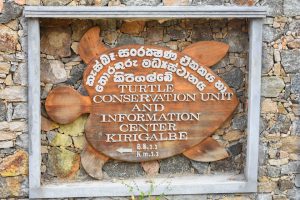
It was midnight as we embraced a whole new experience of Turtle patrolling on the beach-line of the Turtle Conservation Center in Kirigalbe. The center was established to protect turtles and turtle eggs from poachers, predators and to deter illegal loggers. This shore is recognized as a site where turtles come for nesting, during March to August.
Our expectations were really high from the beginning and all our hearts wished to meet a wonderful creature in the gloomy darkness. For our greatest happiness an Olive Ridley Turtle landed ashore. We observed every step of its tasks without disturbing the innocent creature. As responsible Zoology undergrads, we understood that it is up to us to let everyone know the importance of conserving these ill-fated animals, because they are helpless on their own.
 On one evening, we set up a few small mammal traps and hair tubes and laid them in different locations near the camp site. We kept charred coconut as bait. The following day we had a look at the traps and found that a squirrel had been caught. The animal was weighed and morphological features were observed and measured to establish it’s identity. Then it was released back to its micro habitat.
On one evening, we set up a few small mammal traps and hair tubes and laid them in different locations near the camp site. We kept charred coconut as bait. The following day we had a look at the traps and found that a squirrel had been caught. The animal was weighed and morphological features were observed and measured to establish it’s identity. Then it was released back to its micro habitat.
This field excursion was a kind of experience you can’t force or recreate. Every day was different, interesting and fun! In exploring the amazing diversity of wilderness that Sri Lanka has to offer, perhaps Sri Lankans will also come away with a great appreciation for our country’s wild place with a renewed desire to assure their protection for perpetuity.
The days were eventful with wandering, exploring so many wonderful creatures of fauna and flora in Kumana. Yet it reached to an end giving us a hint of sadness. Gratitude was offered and farewells were told as we departed Kumana Bird Sanctuary heading back to the busy suburbs of Colombo.
A special thank you to,
- Prof. Nihal Dayawansa of Department of Zoology and Environment Sciences, Faculty of Science for giving us this wonderful opportunity
- Nisansala Perera, our demonstrator for her immense support
- Mr Sisira Rathnayaka, Park Warden of Kumana National Park for helping us throughout the journey
- Mr Dushantha Kandambi, herpetologist for the guidance given to us at all times
Image Courtesy : Dushantha Kandambi

